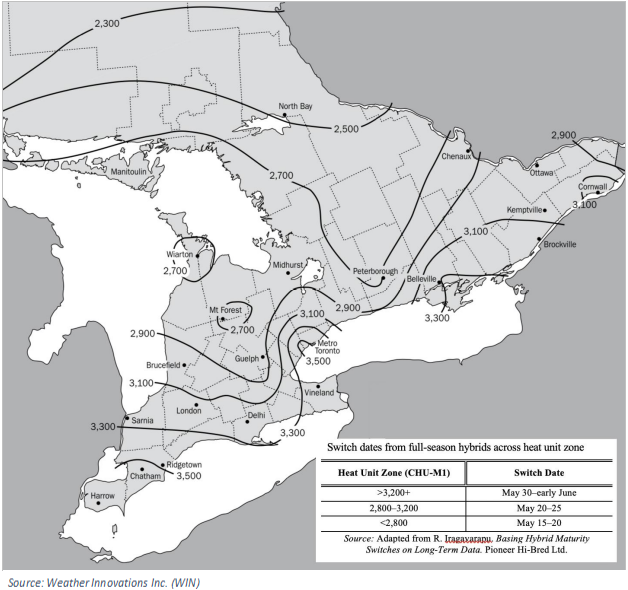Given the weather delays, Ontario producers should re-examine their options for the 2019 crop
Sean Mitchell and Alfons Weersink
Across Ontario (and the United States), farmers have planted
relatively little corn compared to this point in other years.
Delayed corn planting raises concerns about the risk of poorer pollination due to heat stress, an early frost before black layering in the fall, or potentially even increased risk of DON.
When concerned about reduced corn yield due to delayed planting, producers would traditionally plant soybeans instead. For example, many farmers opted to go this route two years ago – but soybeans we priced much higher. This year, farmers’ options are different.
Bids for 2019 corn and soybeans (per bushel) were at $5.06 and $10.46, respectively, on May 22. Given these prices and average yields and costs, projected returns to soybeans are approximately $100 less per acre than corn. (See Table 1). The difference in net returns between the two crops limits the attractiveness of switching to soybeans.

An alternative to planting more soybeans (or edible beans) is to switch to lower corn heat unit (CHU) corn hybrids.
Advances in genetics have allowed full-season hybrids (>3000 CHU-M1) to maintain yield potential even at relatively late planting. But, after May 20, much of Ontario’s mid-maturity corn growing areas (2,800 to 3,200 CHU-M1) should consider a switch to lower CHU hybrids to avoid increasingly large drops in yield potential, as Dave Hooker and Greg Stewart have shown.

Yield potential within these mid-maturity corn growing regions stays relatively constant up until May 20. However, yields begin to decline significantly each day after that and the drop in yield can far exceed 10 per cent if corn planting is delayed until the end of the month.
Alternatively, lower CHU hybrids allow for farmers to maintain yields within approximately 5 per cent of their full potential. These hybrids can outperform full-season hybrids in a shorter
growing season. OMAFRA, in conjunction with the Grain Farmers of Ontario, has a useful tool to compare alternative heat unit hybrids:
gocorn.net.
In addition to having higher yields at the end of the season, switching to a lower CHU hybrid also reduces the risk of DON developing in corn that is planted later in the season.
Even if the potential yield of a lower CHU hybrid is only slightly better than what may have resulted from full-season hybrids, lower CHU hybrids will mature faster. As a result, these hybrids should help ensure that drying costs remain reasonable during what could be a late harvest.
The decision to change corn hybrids can be tough, but it is a prudent way to mitigate risk during what appears to be an unconventional start to the growing season.